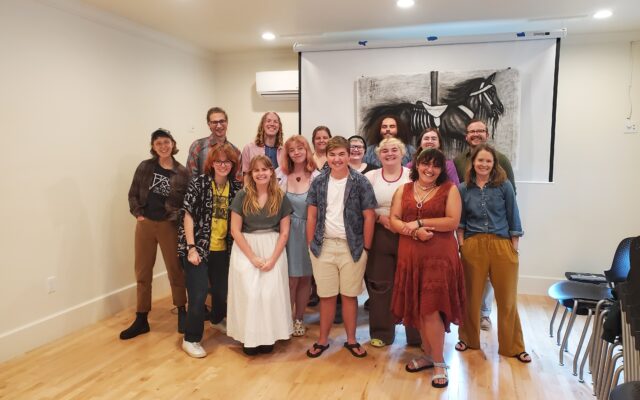
Pilot program sends high-need college students to Monson to experience life as artists
MONSON — Before Horisun Antunee arrived in Monson, he wasn’t convinced that he could call himself a writer.
“When I came here, I wanted to say that I was a writer, but I did not believe that,” Antunee said. “Now I can confidently say, or semi-confidently, that I am. That is an amazing thing.”
Antunee is one of 12 students who participated in a nearly three-week-long pilot program between Monson Arts and the University of Maine at Farmington. The honors course — a spin on the Monson Arts residency program that has transformed the town into a diverse and creative haven for visiting artists — brought a group of high-need and federal Pell grant-eligible students to the community to make art. Because their art matters, and they deserve time and space to express themselves, said Kristen Case, one of the professors who designed the course.
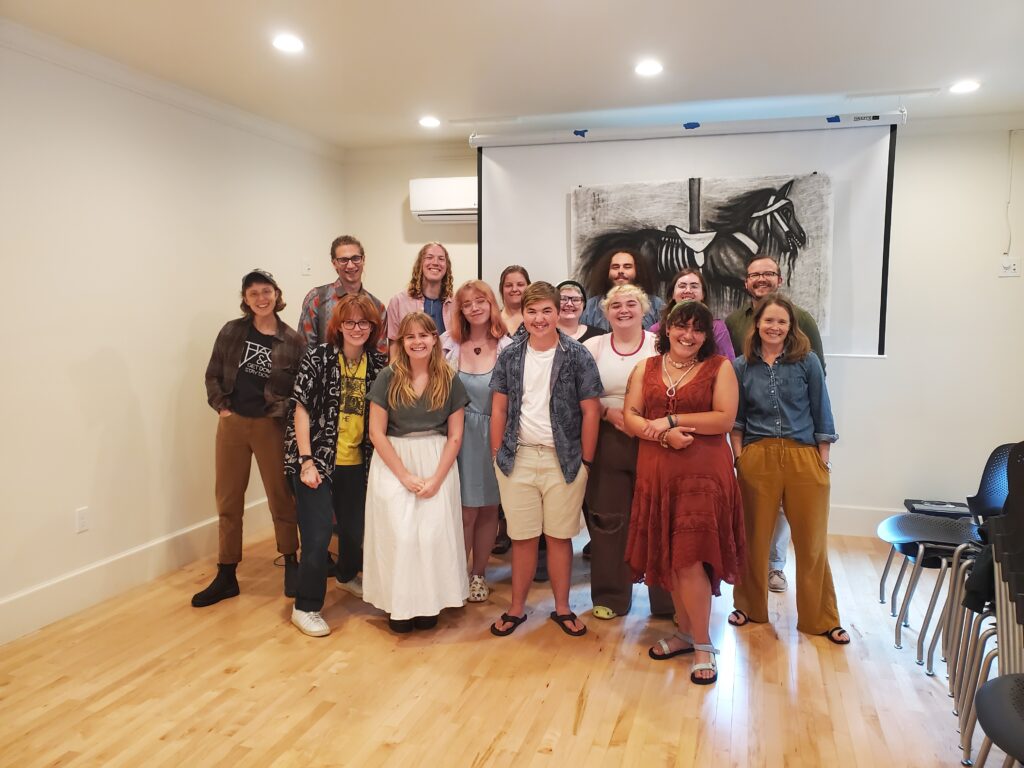
COLLEGE ART PROGRAM – University of Maine Farmington undergraduate students involved in a pilot program between the college and Monson Arts presented their writing and visual art projects Wednesday. They shared paintings, sound art, screenplays and novels, among other creations.
If the partners involved see the program as a success, it could be offered again, possibly to other University of Maine System campuses, Monson Arts Director Chantal Harris said.
Most of the emerging artists taking the “Monson Arts Seminar” course are first-generation college students balancing classes and full-time jobs, Case said. She teaches some students who are simply trying to graduate because it’s most strategic for them, she said, but they have talent that should be recognized and nurtured.
“My feeling is that, like everyone else, our students are squeezed,” said Case, an English professor. “There are plenty of great opportunities for them at UMF, but most are either resource- or time-intensive in a way that makes it hard for these students in particular to take advantage of.”
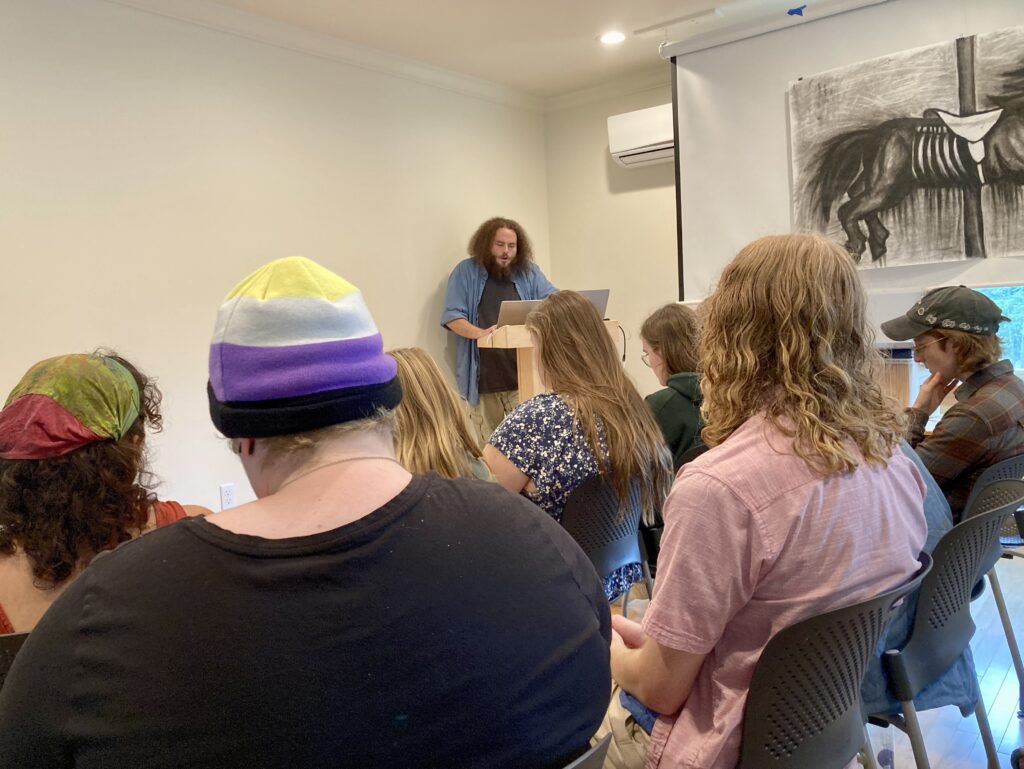
University of Maine Farmington student Horisun Antunee reads a screenplay Wednesday. His classmates and fellow artists also presented projects as the pilot program came to a close.
Case, who designed the course with music composition assistant professor Aaron Wyanski, drew inspiration from her residency in Monson in 2021 and wanted students to see the value in cultivating a creative practice.
Wyanski, who has participated in other residencies, noted it can feel alienating to grow as an artist, especially being young, worrying about adult responsibilities and living in Maine. He wanted students to feel the collective power, or the “in it togetherness,” of the experience, he said.
The students, who presented their work last Wednesday, come from Maine towns such as Bowdoinham and Athens, and other parts of the country, including Baltimore, Maryland, and Pagosa Springs, Colorado. They are writers — of poetry, novels, personal essays, short films and more — visual creators and sound artists who use a wide range of media.
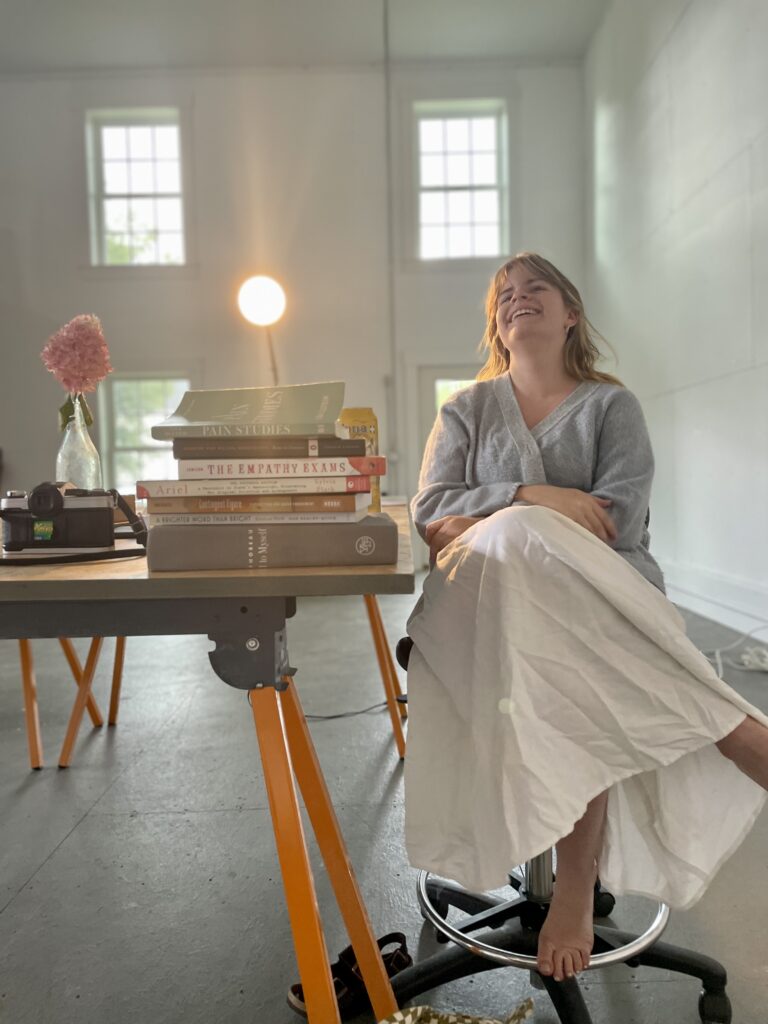
ARTIST IN STUDIO – University of Maine Farmington student Isabelle King, pictured in her studio at Monson Arts.
They came to Monson feeling like imposters, grappled with writer’s block or panicked when their projects didn’t come together as planned, the student artists said. Several noted their lives lack creative circles back home or among friends and on campus. While in Monson, they bonded and made friends, gained courage and better got to know themselves as artists, they said.
Kelly Gentilo, who studies arts administration, spent her time drawing inside a physical copy of Ray Bradbury’s “Something Wicked This Way Comes.” She read the novel in sixth grade and has been haunted by it ever since, she said.
Surrounded by other creatives who energized her, Gentilo added to her original vision so the project could be consumed in a three-dimensional way. She presented a slideshow that featured her detailed drawings and excerpts of the book that inspired them. All the while, a large charcoal drawing of a carousel horse looms over viewers, and a chilling soundscape — a funeral march played backward but slightly distorted and mixed with other carnival sounds — plays in the background.

ART NOTES – University of Maine Farmington student Katherine Berube, pictured in her studio at Monson Arts.
Having uninterrupted time to work on the project showed Gentilo that her drawings went far beyond the pages, and in a way, she was responding to herself and her middle school experiences, she said.
Antunee, who studies creative writing and psychology, worked on a personal essay, including short film adaptations of it. The work and screenplay he shared Wednesday focused on his self-worth and how it physically manifested during stages of his life, he said. Antunee hopes that by being honest in his work, readers might find it easier to come to their own understanding.
The University of Maine at Farmington raised funds to cover tuition costs, so the course was free for students. Monson Arts — an initiative of Portland-based Libra Foundation that invested millions of dollars into the town starting in 2017 — provided housing, meals, personal studios and access to the program’s other spaces for coursework and activities.

BONFIRE – From center to left, Aaron Wyanski, assistant professor of music composition at the University of Maine Farmington,and student Marley Sullivan enjoy time around a bonfire in Monson.
Stuart Kestenbaum, who works for the Libra Foundation as a senior adviser to Monson Arts, views the course as a catalyst for young artists. His wish for the pilot, which wrapped up Thursday, is that it gave students “the feeling that there are other people like them, and that it’s possible to be that kind of person,” in the world, he said.
More than anything, Case hopes her students learned they are more capable than they ever imagined, and coming to that understanding will allow them to better advocate for themselves.
“It can be hard when you don’t know that you have it in you,” she said. “I wanted them to experience being amazed by themselves.”
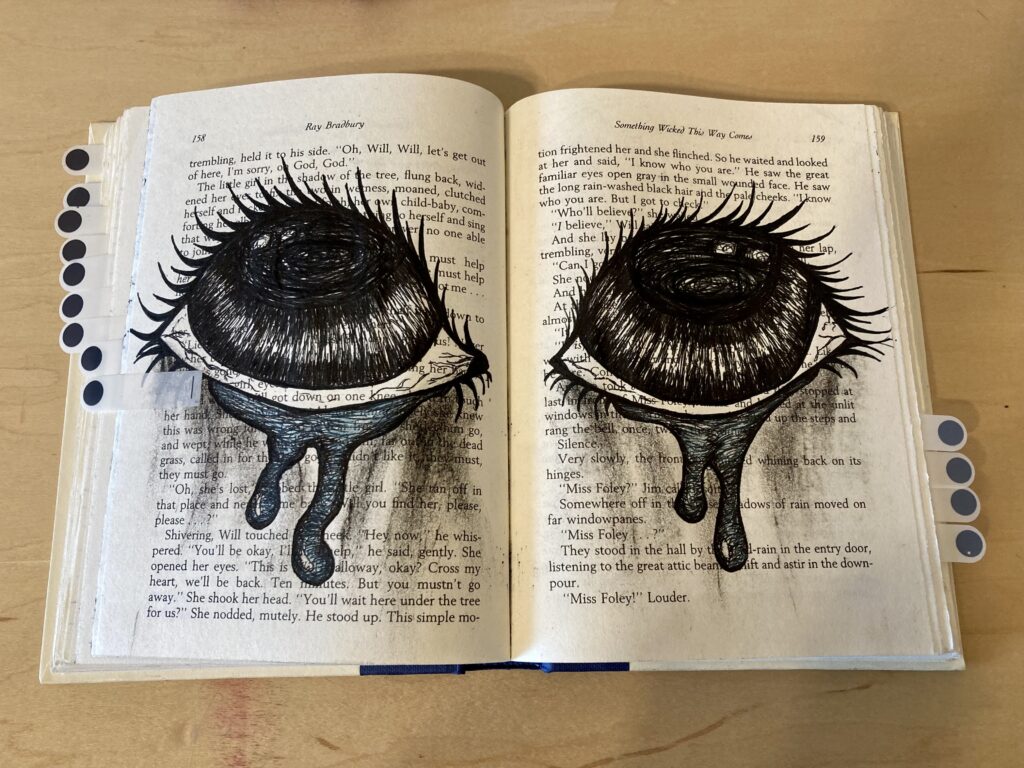
University of Maine Farmington student Kelly Gentilo created drawings inside Ray Bradbury’s “Something Wicked This Way Comes.” She presented a slideshow that paired the drawings with excerpts from the novel, along with a chilling soundscape.
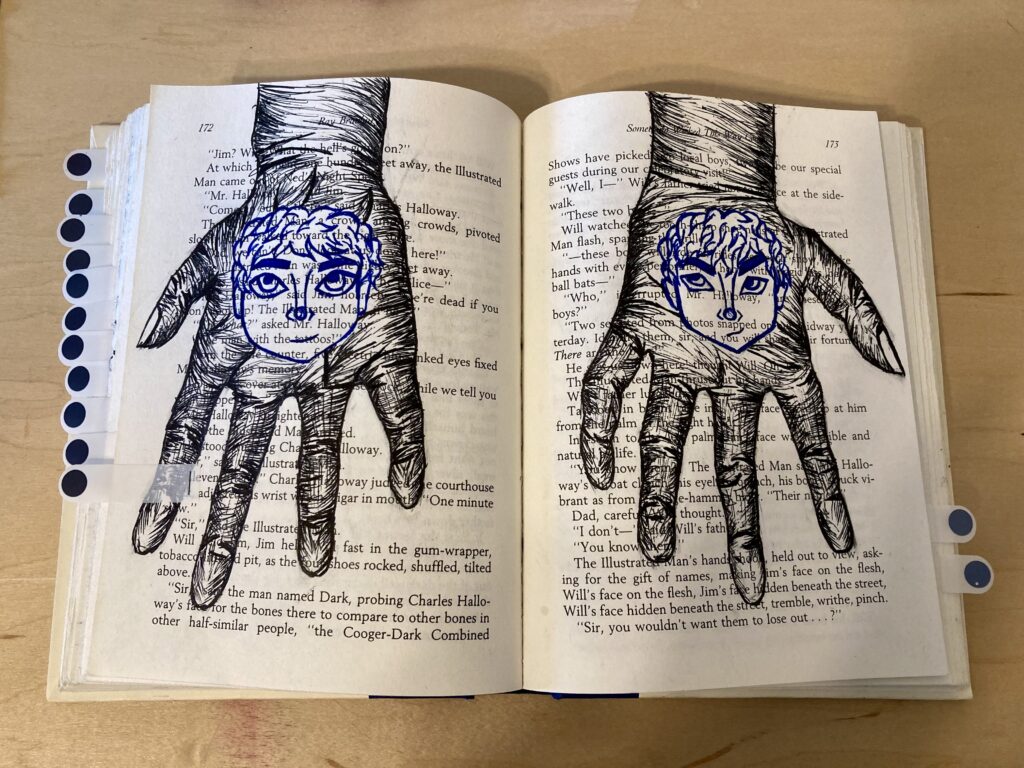
University of Maine Farmington student Kelly Gentilo created drawings inside Ray Bradbury’s “Something Wicked This Way Comes.” She presented a slideshow that paired the drawings with excerpts from the novel, along with a chilling soundscape.